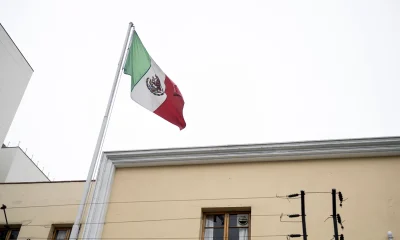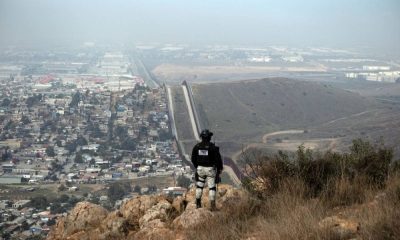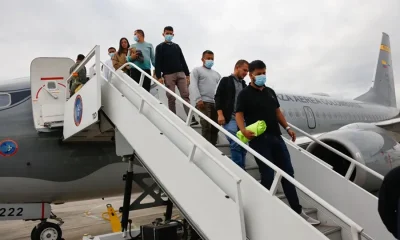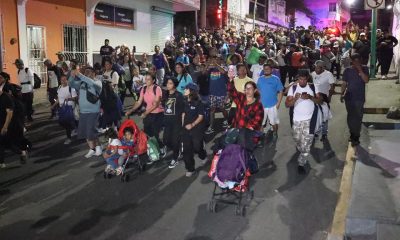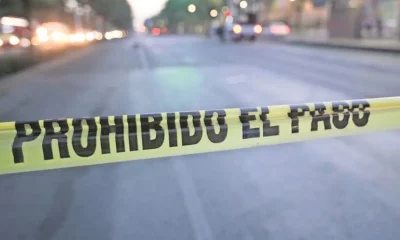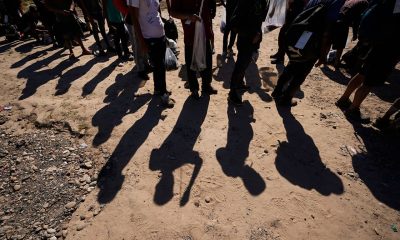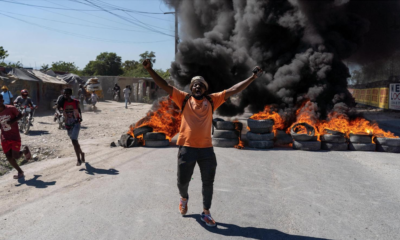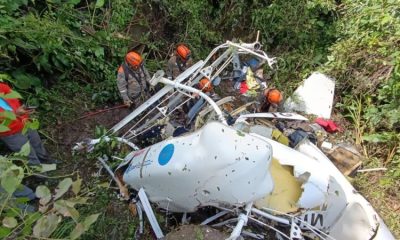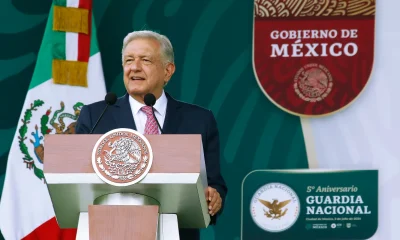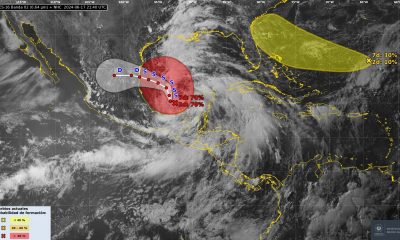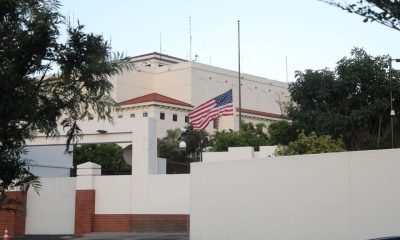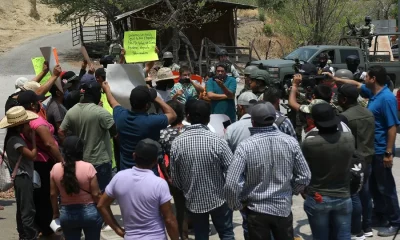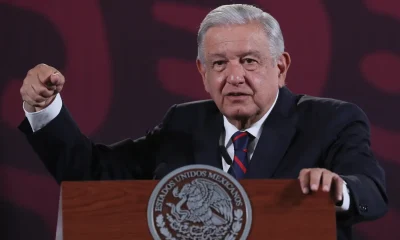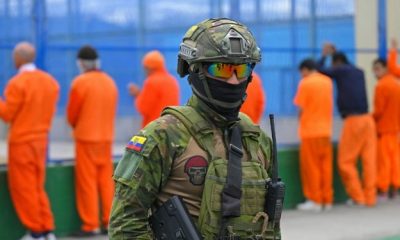Central America
More than 215 gang members deported from Guatemala and Mexico in war on gangs

November 20 |
More than 215 gang members from different terrorist structures have been deported from Guatemala and Mexico to El Salvador as part of the frontal combat against gangs between the end of March 2022 and November 7 of this year, according to data from the General Sub-Directorate of Criminal Investigation (SGIC) of the National Civil Police (PNC) of Guatemala and the National Institute of Migration of Mexico (INM).
On several occasions, the Minister of Justice and Public Security, Gustavo Villatoro, has emphasized that the arrests of the gang members trying to flee from justice are thanks to the good investigative and intelligence work of the Salvadoran police in coordination with Guatemalan and Mexican authorities.
The Security Minister reiterated that the war against gangs, conceived by President Nayib Bukele, will end until the last terrorist is captured and that none of them will escape justice, even if they flee to other countries.
On November 9, the SGIC of the Guatemalan police reported that from January 1 to November 7, 2023, 76 gang members were arrested and handed over to the authorities in El Salvador.
The total number of those apprehended were sent to the Guatemalan Migration Institute (IGM) to be handed over to the Salvadoran Police. Guatemalan authorities indicated that among those captured were 38 members of the Mara Salvatrucha (MS) and 38 of the Barrio 18 gang, from whom 13 pistols, a shotgun, 12 magazines, a motorcycle, two rifles, 192 rounds of ammunition of different calibers, 51 cell phones and a vehicle were seized.
The official report states that the terrorists were wanted by the Salvadoran PNC for committing crimes in the country.
In 2022, 94 Salvadorans were apprehended, of whom 75 were handed over to the security forces and 19 are serving sentences in Guatemala. Of the total number of those captured, 46 were from gang 18, 36 were from the MS and 12 were from other criminal groups. During the operations, 19 firearms, 226 rounds of ammunition of different calibers, 32 cell phones, 14 pistols, nine hoppers and two motorcycles were seized.
The deportees belonged to Las Cachorras, Teclas Locos Salvatruchas and Programas San Marcos MS-13.
The head of the Transnational Anti-Gang Center (CAT), Randall García, commented that the personnel under his charge have carried out 63 deportations and eight captures of members of the cliques, and that the work is carried out by human talent specialized in the search, location and arrest of Salvadoran, Honduran and Mexican criminals operating in Guatemalan territory.
He added that they currently maintain continuous communication with the countries that make up the Northern Triangle of Central America, Mexico and Belize.
“Specific plans are being carried out in border areas where police presence has been maintained with operational control devices, investigation and police intelligence units to reduce the incursion of gang members due to the regime applied by the Government of El Salvador,” said Najarro.
Meanwhile, reports from Mexico’s National Migration Institute (INM) show that in 2021 they arrested seven gang members, while in 2022 they closed with 22 arrests; the figure represents an increase of 214% over the previous year.
According to Mexican authorities, this increase is a result of the security policies implemented by President Bukele’s government against the Mara Salvatrucha (MS-13) and Barrio 18 gangs, which for many years generated terror among Salvadorans.
The latest captures were announced by Minister Gustavo Villatoro. Those arrested were Reyes de Jesús Flores Menjívar, alias Vilma, of the 18 Sureños gang, arrested in Quetzaltenango, Guatemala, and José Steven Tablas López, alias Chele, of the MS-13 structure, apprehended in Tijuana, Mexico.
The terrorists will be prosecuted for the crime of illicit groupings and will serve years in prison. “We are no longer the State that served the interests of criminals. Those times are over,” added the official.
Central America
OAS urges swift recount in Honduras as election results remain uncertain

The Organization of American States (OAS) electoral observation mission in Honduras reported findings of a “lack of expertise” and “delays” in the vote-counting process, but stated that it found no indications that would cast doubt on the results of the November 30 general elections, according to a report presented to the organization’s Permanent Council.
The delay by electoral authorities in releasing the final results “is not justifiable,” said former Paraguayan foreign minister Eladio Loizaga while reading the report.
Honduras marked two weeks on Monday without knowing who its next president will be, following elections in which conservative candidate Nasry Asfura, backed by U.S. President Donald Trump, holds a lead of less than two percentage points over fellow right-wing contender Salvador Nasralla.
Accusations of fraud have dominated Honduras’ political landscape since polls closed on the last Sunday of November.
In addition to Nasralla’s complaints, the current government led by leftist President Xiomara Castro has described Trump’s support for Asfura as an “electoral coup.”
The U.S. president has warned of “serious consequences” if the current results were to change and strip Asfura, a 67-year-old businessman, of his lead.
Although more than 99 percent of the votes have been counted, nearly 2,800 tally sheets contain “inconsistencies” and must be reviewed through a special recount, the National Electoral Council (CNE) said.
“The Mission urgently calls on the electoral authorities to immediately begin the special recount and to pursue all possible avenues to obtain official results as quickly as possible. The current delay in processing and publishing the results is not justifiable,” the head of the OAS mission told members of the organization.
Central America
Panama seizes over three tons of drugs hidden in Caribbean port container
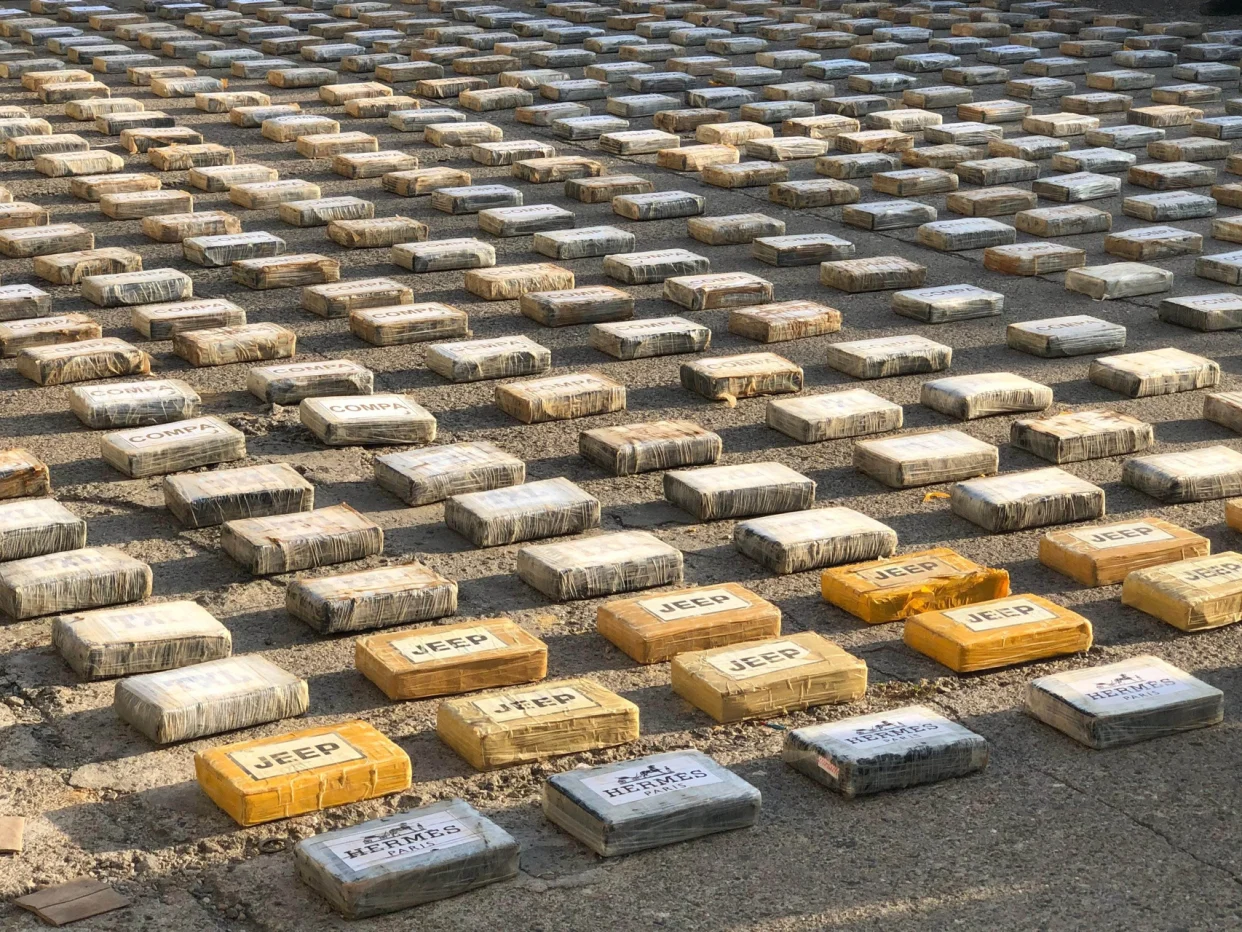
Panama’s National Air and Naval Service (Senan) reported on Sunday the seizure of more than three metric tons of drugs that were concealed inside a shipping container at a port terminal on the country’s Caribbean coast.
According to a statement posted on X, Panamanian aeronaval authorities confirmed the confiscation of 3,205 packages of a suspected illicit substance hidden inside a container in transit through Panama, at a port facility in the Caribbean province of Colón. Each package typically weighs approximately one kilogram.
Earlier this week, Senan agents also seized an additional 2.2 metric tons of drugs and arrested five individuals, including a Colombian national, in separate operations linked to drug trafficking activities.
Panama serves as a major transit route for drugs produced in South America and destined mainly for the United States — the world’s largest consumer of cocaine — and Europe. According to official figures, Panamanian authorities seized approximately 80 metric tons of illicit substances in 2024.
Central America
Honduras election crisis deepens as CNE president denounces intimidation attempts
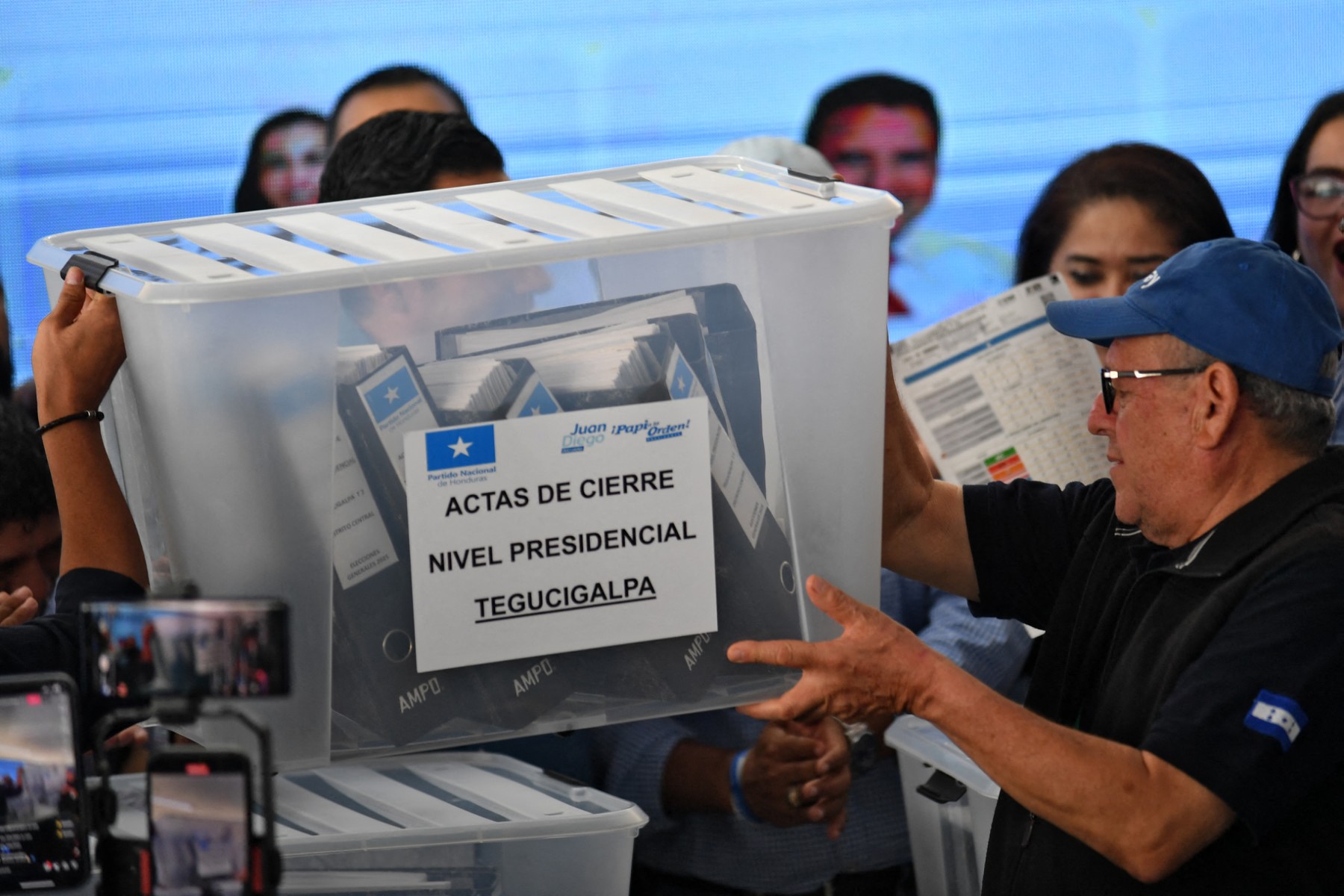
Tegucigalpa remains engulfed in a deep post-electoral crisis, marked by the absence of final results from the general elections held on November 30. On Thursday, the presiding counselor of the National Electoral Council (CNE), Ana Paola Hall, publicly denounced acts of intimidation that she warned could jeopardize the final phase of the process.
Following a meeting with the G-16+ diplomatic corps, Hall expressed concern over two specific incidents: a call by former president Manuel Zelaya summoning supporters of the Libre Party to gather outside the INFOP facilities—where electoral records and materials are being safeguarded—and a statement issued by the Permanent Commission of Congress accusing her and counselor Cossette López of alleged electoral crimes, an action she described as “baseless and outside their jurisdiction.”
Hall reaffirmed her institutional commitment and warned that she will not allow interference in the announcement of the results. “Honduras comes first,” she emphasized, underscoring her intention to defend the electoral process as a cornerstone of democracy.
Meanwhile, the preliminary results place Nasry ‘Tito’ Asfura, candidate of the National Party, in the lead with 40.52%of the vote, followed closely by Salvador Nasralla of the Liberal Party, with 39.48%. The ruling party’s candidate, Rixi Moncada of Libre, is in third place with 19.29%. Around 0.6% of the tally sheets—many of them showing inconsistencies—have yet to be reviewed.
The Organization of American States (OAS) called an extraordinary session of its Permanent Council to analyze the situation, while civil organizations and governments such as Paraguay’s urged respect for the popular will.
Honduran President Xiomara Castro accused the United States, and specifically former president Donald Trump, of obstructing the process, while also denouncing threats from gangs against voters aligned with her party.
-

 Central America4 days ago
Central America4 days agoHonduras election crisis deepens as CNE president denounces intimidation attempts
-

 International4 days ago
International4 days agoCuba battles out-of-control dengue and chikungunya epidemic as death toll rises to 44
-

 International4 days ago
International4 days agoColombia says it would not reject Maduro asylum request as regional tensions escalate
-

 International1 day ago
International1 day agoPolice investigate deaths of Rob Reiner and wife as apparent homicide
-
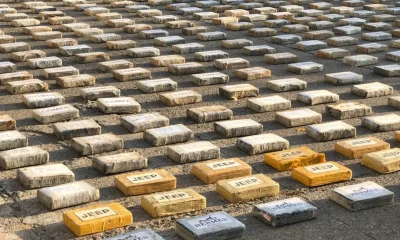
 Central America2 days ago
Central America2 days agoPanama seizes over three tons of drugs hidden in Caribbean port container
-

 International3 days ago
International3 days agoSeveral people shot in attack on Brown University campus
-

 Central America1 day ago
Central America1 day agoOAS urges swift recount in Honduras as election results remain uncertain
-
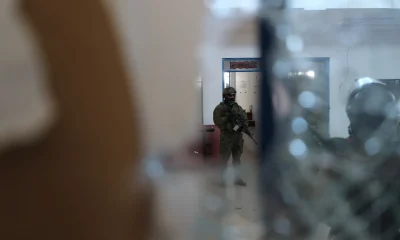
 International4 days ago
International4 days agoEcuador on track for record violence as homicides hit highest level in Latin America again
-

 International3 days ago
International3 days agoU.S. and Mexico Reach Deal to Address Water Deficit Under 1944 Treaty

























